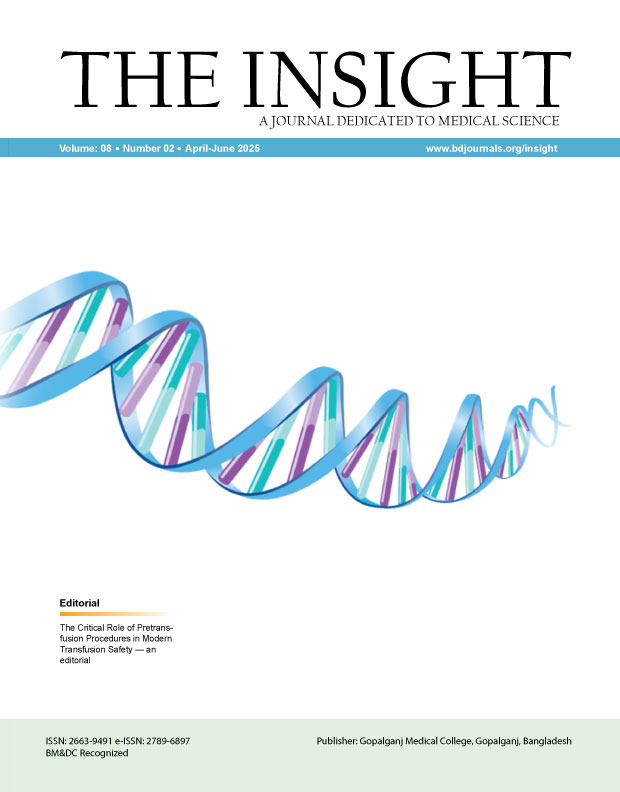Abstract
Background: Understanding the preoperative clinical profile of patients undergoing coronary artery bypass grafting (CABG) is essential for surgical planning and outcome prediction; however, population-specific data from Bangladesh are limited. Objective: This study aimed to describe the demographic, anthropometric, comorbidities, renal, and cardiac characteristics of Bangladeshi patients undergoing isolated CABG at a tertiary cardiac center. Methods & Materials: A comparative cross-sectional study was conducted at the National Heart Foundation Hospital and Research Institute in Dhaka between September 2020 and August 2022. Five hundred consecutive patients scheduled for isolated CABG were enrolled in this study. Data were collected from medical records and assessments using standardized forms. Descriptive statistics were performed using SPSS (version 26). Results: The mean age was 60.2 ± 7.5 years, with 81.8% male patients. Over half (51.6%) were overweight (BMI 23–27.5 kg/m²), and hypertension (63.6%) and diabetes (44.2%) were the most common comorbidities. Normal renal function (serum creatinine < 1.4 mg/dL) was found in 91.2% of patients, with a mean creatinine clearance of 85.9 ± 13.4 mL/min. Most patients were NYHA class III (62%), with 70.6% having had a recent myocardial infarction and 77.6% showing an ejection fraction of 31–50%. Elective CABG comprised 75.4% of cases, while 1% were emergent. Conclusion: Bangladeshi CABG patients typically present as middle-aged males with high rates of hypertension, diabetes, and moderate ventricular dysfunction. Recognizing these preoperative characteristics is crucial for optimizing care and tailoring risk models for regional populations.

This work is licensed under a Creative Commons Attribution 4.0 International License.
Copyright (c) 2025 The Insight





 PDF
PDF